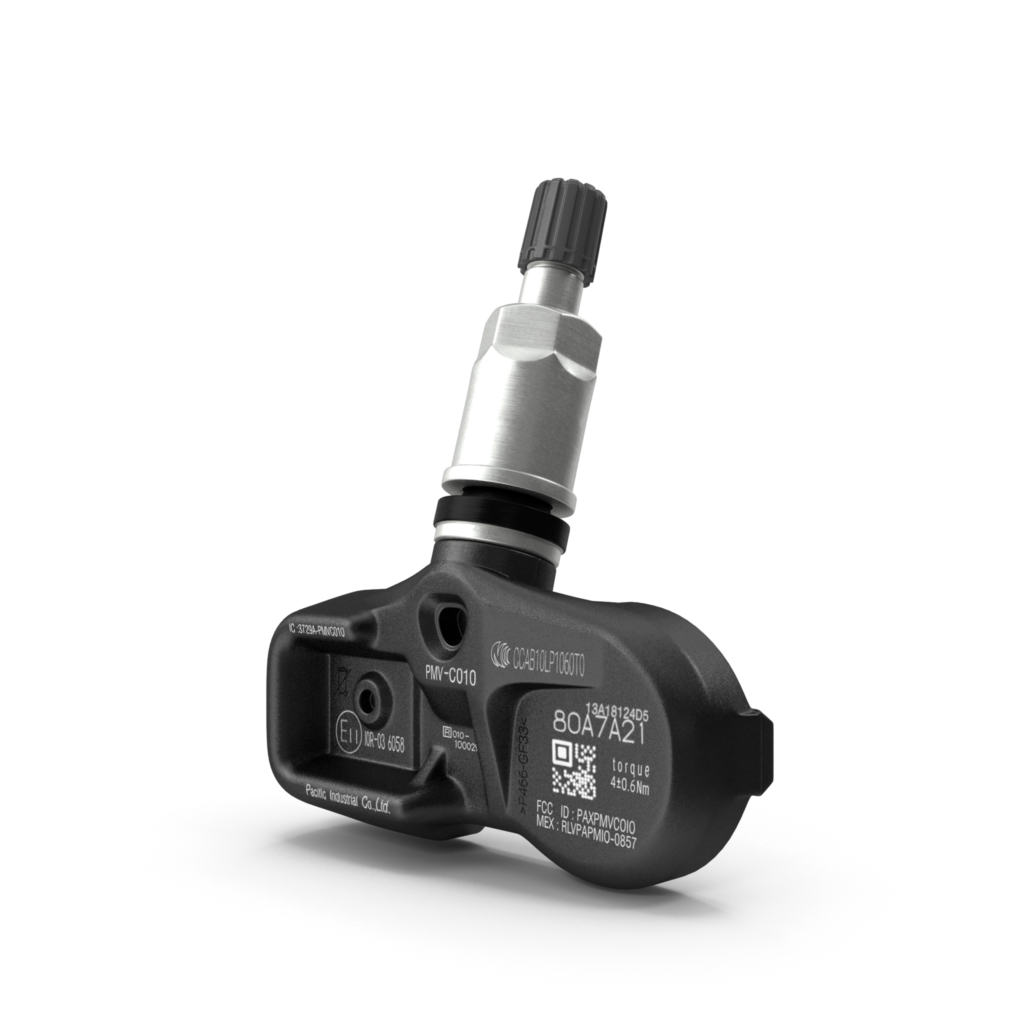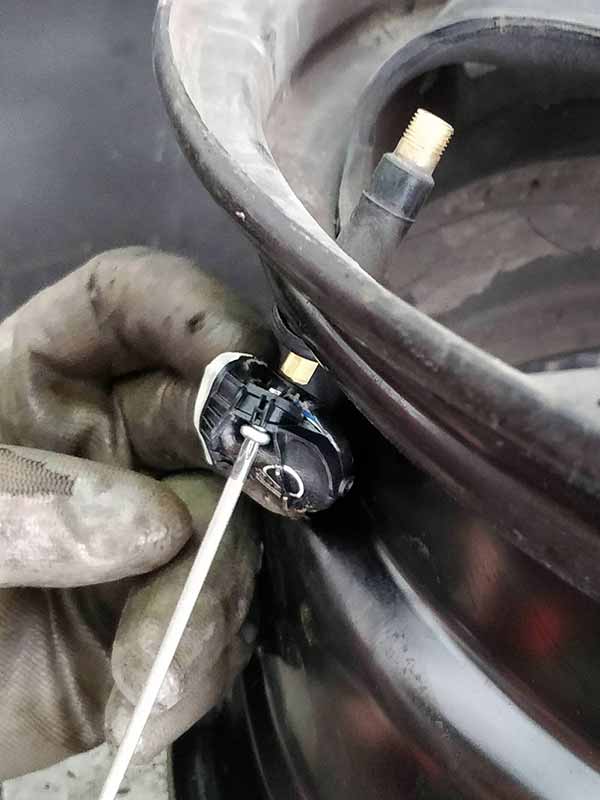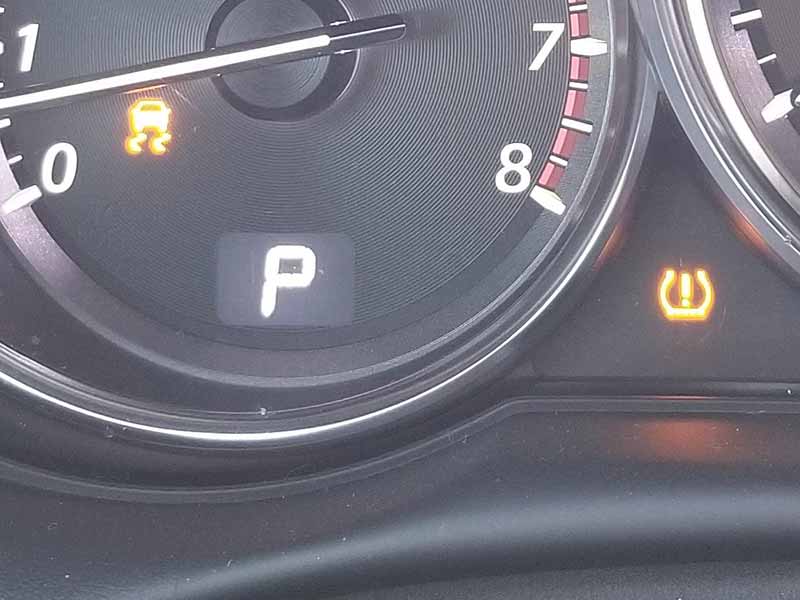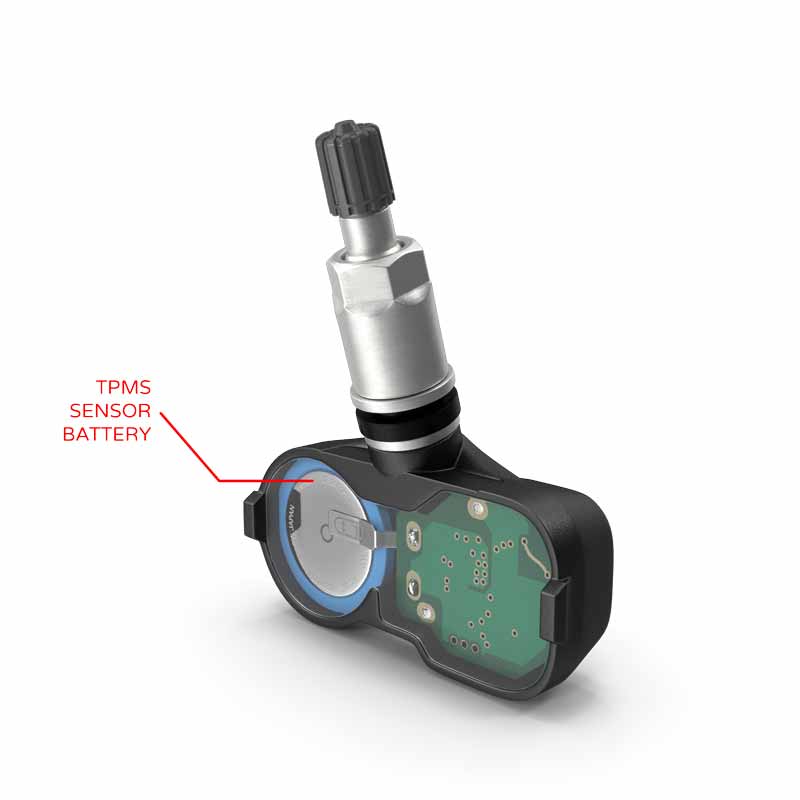A tire pressure sensor that fails to communicate with your tire pressure monitoring system will generate an error fault and display a flashing warning light on your dashboard.
Taking the time to get this sensor replaced can be inconvenient. And if you’re like me, procrastination can get the better of you. What happens if you ignore this problem?
Can You Drive With A Bad TPMS Sensor?
Tire pressure sensors warn you of dangerous low-air pressure situations. Low tire pressure is much more difficult to “feel” with modern low-profile tires. Driving without working TPMS sensors isn’t recommended.
Some states may also have laws that require a functioning tire pressure monitoring system to pass state inspection or even be driven on public roads.
If you have a tire pressure sensor fault due to a bad tire pressure sensor, you place yourself at greater risk for several reasons.
Let’s take a closer look.
How Long Can You Drive With The Tire Light On?
If your tire light comes on, you should immediately pull over and manually check each tire’s air pressure. The point of your tire pressure monitoring system is to alert you to a potentially dangerous situation before it leads to a catastrophic blowout or wreck.
Once you’ve ensured that your tires are properly inflated, it is safe to continue driving. If your tires have low tire pressure but aren’t flat, you should put air in them immediately to prevent damaging the tires by continuing to drive or causing the tire to come apart due to the heat buildup from driving with underinflated tires.

Slowly driving to the nearest gas station that will hopefully have a working air pump is okay if your tires aren’t much more than 30% or so lower than the recommended pressure. Much more than that, and you may want to consider putting on a spare tire if you have one. Otherwise, consider calling a tow truck.
I recommend picking up a portable air compressor to keep in your trunk. These relatively inexpensive tools are handy for regularly topping up the air pressure in your tires and an emergency on the side of the road.
Why Is My Low Tire Pressure Light On When My Tires Are Fine
If you checked the air pressure in your tires and found that they were all inflated to the proper tire pressure, there is probably an issue with one of the tire pressure sensors.
If you start your vehicle and the tire pressure light blinks or flashes for 60 to 90 seconds and then remains lit until you turn your car or truck off, this is your vehicle warning you that there is a problem with the tire pressure monitoring system.

The most common reason for a tire pressure warning light other than low tire pressure is a dead battery in a tire pressure sensor. The battery life of a typical tire pressure sensor is 7 to 10 years, but this can be as short as 5 years or even less.
If this is your situation, you’ll need to purchase a tire pressure sensor replacement and have it installed at your local tire shop or your vehicle manufacturer’s local dealership.
What Happens If You Don’t Replace TPMS Sensors?
If you don’t replace dead tire pressure sensors, your low tire pressure warning light will flash every time you start your car or truck, and the light will stay on every time you drive your vehicle.

This situation is obviously a nuisance, but it is tolerable if you don’t have the cash at the moment to fix the problem. The real issues are the potential risks you run by ignoring this warning light.
You’ll need to regularly check the air pressure in your tires to ensure no problems. This is not just important for your safety but for the protection of others on the road.
You can’t rely on simply looking at your tires to tell if they have lost too much air. This is especially true for low-profile tires and run flats. Even tires with taller sidewalls aren’t possible to simply look at to tell if they are properly inflated.
You won’t be alerted if you have a sudden loss of pressure in one of your tires or a flat tire. This is a much more significant concern today than before tire pressure monitoring systems were required. This is due to low-profile tires and run flat tires making it much more difficult or even impossible to feel when a tire is significantly underinflated or even completely flat.

Do You Need TPMS Sensors To Pass Inspection?
Some states require that your tire pressure monitoring system function correctly, or your vehicle will fail inspection. This is not true for every state. In fact, most states don’t have this requirement, but laws change regularly, so you’ll need to check what the situation is in your state.
Is It Illegal To Drive Without TPMS?
I’m unaware of any states where you will be cited for a low air pressure warning light on your dash. I’d personally be surprised if there were many, if any. But I’ve been known to be wrong before.
I suspect if there are any laws that prohibit you from driving with a TPMS light on your dashboard, most officers won’t bother to write you a citation unless they were already citing you for something else. But this is just speculation on my part and not something you should rely on.

You also open yourself up to be found at fault for an accident. Even sued if your car or truck if the source of the accident can be traced back to the negligence of your tire maintenance.
You should always check with your local laws and regulations to ensure you won’t have an issue if you’re in this situation.
How Often Do TPMS Sensors Need To Be Replaced?
Most tire pressure sensors will last 7 to 10 years. The reason for the failure is usually due to the battery life of these small devices. TPMS sensors wirelessly communicate with the TPMS system’s main computer. They need to be wireless since they’re sealed inside the tires, and there’s no practical way to run a wired connection.
Sensors can also get damaged in several ways, but the overwhelming majority of the causes for a tire pressure sensor fault is a dead or dying battery.
Can You Replace Batteries In TPMS Sensors?
It’s recommended that the entire tire pressure sensor be replaced when this happens. The battery is sealed inside the sensor housing, and it usually isn’t practical to access it inside. The battery is usually covered in a silicon-like sealant to protect the electronics from moisture and other hazards that might be exposed inside a tire.

It is possible to replace the battery if you’re a determined DIY’er willing to do a little soldering. It usually isn’t worth the effort to do this, however. It is quite time-consuming, and aftermarket TPMS sensors can be purchased for $25 to $30.
How Much Is A TPMS Sensor?
An OEM TPMS sensor replacement will typically cost you $100 per sensor, while an aftermarket TPMS sensor replacement can be purchased for $25 or $30 each.

Aftermarket Autel MaxiTPMS MX Sensor
Installation is the real challenge, though. You’ll need to either pay someone to install the sensors or have access to a tool to program them into your tire pressure monitoring system.
You also will need to have the ability to remove the tire from the wheel and remount it. This usually needs to be done with tools found at your local tire shop, but it can be done with ingenuity and determination.
Can I Replace Just One TPMS Sensor?
Tire pressure sensor replacement is usually done on all four tires simultaneously. The reason is that the battery life of the sensors is similar. Once one battery dies, the other sensors will fail soon afterward.
You’ll save money and time by having all of them replaced at the same time, but nothing is keeping you from only installing just one.
However, you should know that you are on an inconsistent schedule once you replace only one sensor. If you want to replace all four tire pressure sensors simultaneously, you’ll need to replace one or more sensors before at least one of the batteries is completely used.
Resources
Below are some links you may find helpful when learning about tires
- Dead TPMS sensor battery – Tire Review
- How to check your car’s tire pressure and inflate tires – Edmunds
Final Thoughts
It’s important to understand that as tires have migrated toward shorter sidewalls, the ability to “feel” low tire pressure or even a flat tire has become difficult or impossible. This can lead to a catastrophic blowout.
If you need to postpone the replacement of a dead TPMS sensor, you should be sure to regularly check your tires with a tire pressure gauge.
Good luck and happy motoring.




